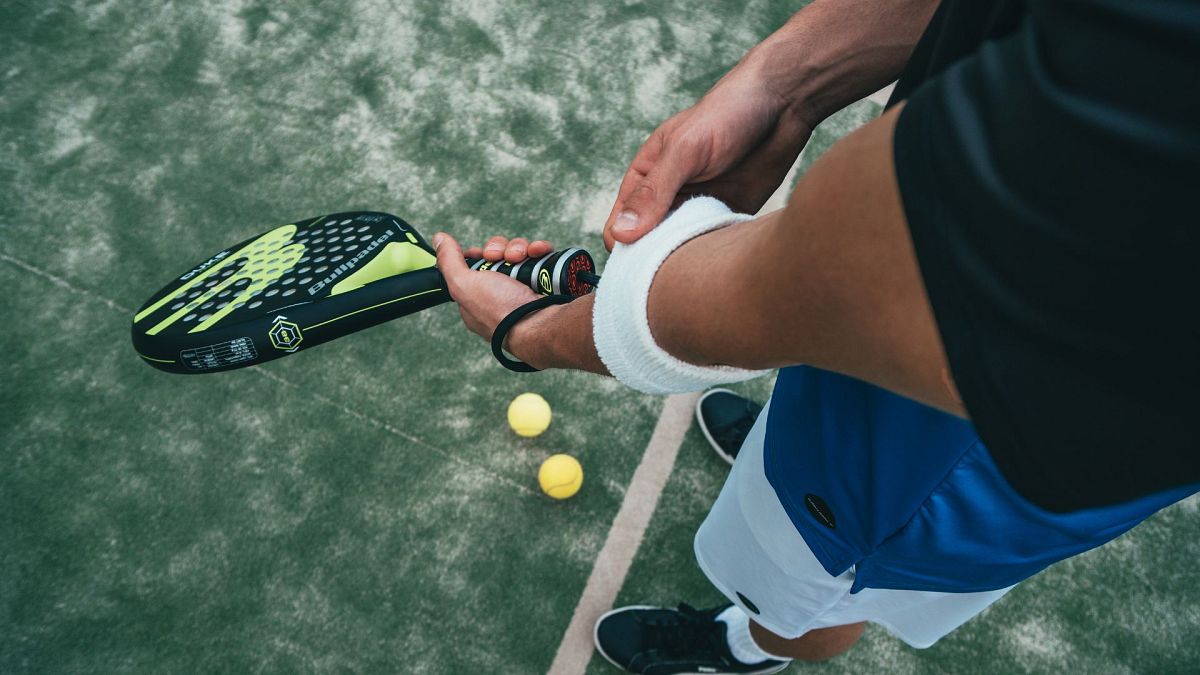Padel, the racket sport born in Mexico, has transcended borders and captured the hearts of enthusiasts worldwide, particularly gaining traction in Europe. Here’s why you should join the padel phenomenon.
Novak Djokovic set another incredible record in the history of men’s singles tennis on Sunday winning an unprecedented 23rd Grand Slam title with victory over Casper Ruud at Roland Garros. But there are some who are predicting the sport may soon be eclipsed in size and popularity by padel. Ever heard of it?
If not, allow me to introduce you to this brilliant and rapidly expanding pastime.
Padel is a doubles racket discipline that combines elements of tennis and squash, and is played on a shrunken-down court with glass walls and a lower net.
In recent years it’s exploded in popularity and is the fastest growing racket sport in the world.
Celebs like David Beckham, Roger Federer, Rafael Nadal, Sylvain Wiltord and Neymar have all jumped on the padel bandwagon. Even Jurgen Klopp, the manager of Liverpool Football Club, couldn’t resist and got a court installed at their training ground.
But here’s the thing: despite its remarkable rise to fame, many of us have been left in the dark about this sporting sensation. It’s time to catch up and get in on the action.
So we spoke to Sandy Farquharson, the founder of The Padel School, a renowned educational platform at the forefront of the sport.
With Sandy’s expertise and deep understanding of padel, we’ve crafted a comprehensive guide that encompasses all the essential aspects of the game.
Now, let us commence our journey from the inception of the game, delving into its origins and evolution.
Where did padel originate from?
Padel was born in sunny Acapulco, Mexico, in the late 1960s by a wealthy gentleman named Enrique Corcuera, who had a passion for tennis but lacked the space to build a proper court on his property.
Determined to enjoy the sport, he came up with the idea of constructing a smaller court surrounded by walls to keep the ball in play.
Alfonso of Hohenlohe-Langenburg, a Spanish friend of Corcuera, had the opportunity to try out the new padel invention at Enrique’s home and was instantly captivated by the sport.
Inspired by his experience, Alfonso took the initiative and established the first two padel courts at a tennis club in Marbella, Spain, in 1974.
Padel then quickly gained popularity in Spain and other Spanish-speaking countries including Argentina and Uruguay.
Over the past decade, padel has experienced a thriving expansion on a global scale, with its popularity skyrocketing in several other European countries, including Sweden, France, Italy and more recently, the United Kingdom.
What are the rules of padel?
Padel is a doubles game, typically played with four players on a court that is approximately 25-30% smaller than a standard tennis court.
The sport largely follows the rules of traditional tennis, with a few notable differences.
When serving in padel, you must bounce the ball on the ground and hit it underarm, below hip height.
The glass walls are deemed in play, allowing players to use them strategically. For example, “You can hit the ball against your own glass to go over to the other side of the net,” explains Sandy from The Padel School.
After the serve, the ball must bounce once on the receiving side before being returned.
Padel scoring is largely the same as regular tennis (i.e. Love-15-30-40-Game), however, in the professional circuit, a “golden point” is used to break the deuce and determine the game winner.
Padel or pickleball?
You might have come across pickleball and noticed its similarities to padel.
Although both are scaled-down versions of tennis, these two sports have distinct differences.
Pickleball, popular in the United States, is played on a smaller court without glass walls and features a plastic wickle ball, creating a unique playing experience separate from padel.
Sandy explains, “While the game (pickleball) is very different, the reasons for popularity are the same. It’s easy to start playing, it is sociable, because you can play in singles or in doubles, and you’re in quite close proximity.”
Why has padel become one of the fastest growing sports in the world?
Sandy attributes the significant surge in the sport’s popularity to several key factors.
Firstly, he emphasises that one of the primary drivers behind its rapid growth is its inherent ease of learning.
“So you could go and play with three other friends and you could have a fun game and there’s no technical barriers to entry.”
“You don’t like tennis for example have a complicated technique like the serve to learn before you can have a game. With padel you can immediately start playing with friends and actually have quite a competitive game even if the levels are not all perfectly matched,” he explains.
He also highlights that the game is compatible for players seeking a long-lasting pursuit, enticing those who are willing to invest time and effort to truly master the intricacies of the sport.
“It challenges me as an ex-tennis player and someone that’s played padel for ten years and I can have a really challenging tactical game.”
Another crucial catalyst for its expansion lies in the widespread endorsement it has garnered from renowned celebrities over the past decade, including the likes of Andy Murray, David Beckham, and Zlatan Ibrahimovic.
When icons like them are hooked, why should you be left out?
As Sandy promises, “If you don’t enjoy your first padel experience, you will be the first person I’ve come across that feels that way.”
Check out the video above to watch our chat with Sandy from The Padel School.

